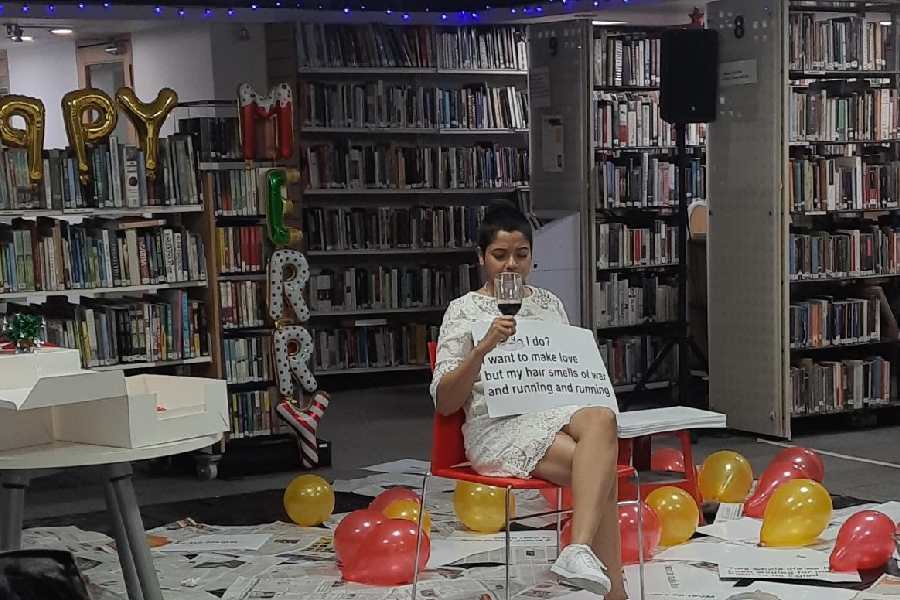It seems to be the season of politically-engaged art that hopes to find answers
to questions about the arbitrary horrors of discrimination, subjugation, war and homelessness with stubborn fortitude. As the performer emerges as a political figure, she affirms that the two are often not distinguishable. Three recent artistic engagements in the city — along with many others — were devastating in their import as they examined some of the most disorienting political moments of our times and attempted to think things through in opposition.
Daminee Benny Basu’s Silence, Please, curated by Pickle Factory and a part of
the American A-Liverary in association with the British Council Library, Bhangar Gora, an ensemble performance presented by B-CAF, and Social Justice Choreography: Making Dance in Solidarity and in Dissent by Ananya Chatterjea at The Creative Arts Academy were outraged responses to the threats to cohesive democracy and, indeed, to basic human existence.

Ananya Chatterjea in Michhil Amra Ananya Chatterjea
Basu’s work (picture, left), at the British Council Library, was a performance inspired by literature and lyrics — Warsan Shire’s “From War” and Bob Dylan’s “Masters of War”. At a time of fevered political insanity and genocide committed daily by the Israeli authorities in Gaza, the performance artist creates this piece for the hell of it, if only to cope with the deep sense of hopelessness welling inside her, if only to wrap her head around it by foraying beyond the horrific newspaper headlines. An angry and brutal work, it is startlingly raw in its frightening details and disturbingly graphic metaphors of cold-blooded violence. Silence, Please is an extension of who Basu is and how she sees the world disintegrating around her. At a time when the freedom to offend — and protest — is under threat, this 20-minute, work-in-progress tour de force challenges power and questions the lack of human values. She uses silence as a tool to critique the egocentric apathy of individuals and States — and she uses it with deafening effect.
With an audience of 20-odd people crammed into a residential flat in South Calcutta’s B-CAF space, its intimate settings and the inherent challenges of a restrictive space intensified the discomfort contained within the theme of the collaborative project, Bhangar Gora. But such venues are capable of inviting a level of engagement and association that far makes up for the inconveniences. This particular piece — with the visual artist, Archee Roy, songwriter-performer, Manidipa Singha, dancer-choreographer, Sangram Mukhopadhyay, singer, Pritha Chattopadhyay, and dancer-choreographer, Monami Nandy — with its anti-war politics, gained a visceral power from the blurring of borders between performer and audience. Everybody in the room was vulnerable, charged, emotionally unsettled, confused and lost, adding urgency to the experience by transcending the predicaments of physical closeness. The sense of claustrophobia, in fact, made the work more immersive.
In The Creative Arts Academy’s black box, Ananya Chatterjea, a contemporary dancer-choreographer committed to social justice and community-embedded practice, danced stories of oppression and dreams of women of the Global South in her presentation from the work, Michhil Amra (picture, right). Inspired by protest marches from her youth in Calcutta as well as more recent global demonstrations, she created extraordinary visual metaphors for dissent, empowerment and resilience in her solo performance. The abiding one, of course, was the leitmotif of the shankhachil or the brahminy kite, with its wings spread out in astonishing beauty, reaching for the sun.










